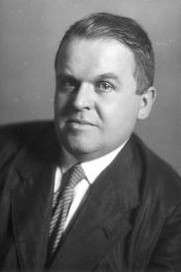Ludwig von Baldass

Ludwig von Baldass (German: Ludwig von Baldaß; 1887–1963) was an Austrian art historian, professor and acclaimed author who specialised in Early Netherlandish painting.[1] He studied under Max Dvořák at the University of Vienna and began to lecture there in 1926, gaining the position of professor in 1934. Von Baldass' 1942 treatise on Hans Memling was instrumental in the re-evaluation of his artistic importance.[2] Other publications include articles and books on Jan van Eyck (1952), Hieronymus Bosch (1953), Giorgione and Albrecht Altdorfer.[3]
Following the Anschluss with Nazi Germany, von Baldass adhered to the Nazis' policy on the arts. His approach seems to have been one of pragmatism, out of an interest in both preserving and expanding the state collection. When the Reich began a campaign of plundering works from Jewish collectors, members of the Rothschild family attempted to leave the country, taking their paintings with them. Von Baldass resisted and frustrated their efforts in a bid to prevent the works from leaving Austria. As a result, most passed into the hands of the Nazi state. After the war, Louis Rothschild attempted to reclaim parts of his collection, but von Baldass made use of his influence and bargained that some pieces should stay in the care of the state Kunsthistorisches Museum, in return for the passage of a number of others back to the Rothschild family. De Rothschild was eventually and reluctantly forced to concede to these terms.[1]
Von Baldass retired from lecturing in 1949 and devoted himself to writing; his most important works were published after 1952. He was married to Paula Wagner, a granddaughter of the architect Otto Wagner.[1]
Publications
- Albrecht Altdorfer. Gallus Verlag, 1941
- Hans Memling. 1942
- Conrad Laib Und Die Beiden Rueland Frueauf. V von Anton Schroll, 1946
- Jan van Eyck. Phaidon Press, 1952
- Hieronimus Bosch. Abrams, 1960
- Giorgione. Thames & Hudson, (posthumously) 1965
Notes
- 1 2 3 "Baldass, Ludwig von. Dictionary of Art Historians. Retrieved 17 March 2012.
- ↑ Moxey, Keith PF. "The practice of persuasion: paradox and power in art history". Cornell University Press, 2000. 34. ISBN 0-8014-8675-0
- ↑ "Ludwig Baldass (1887–1963)". LibraryThing. Retrieved 18 March 2012